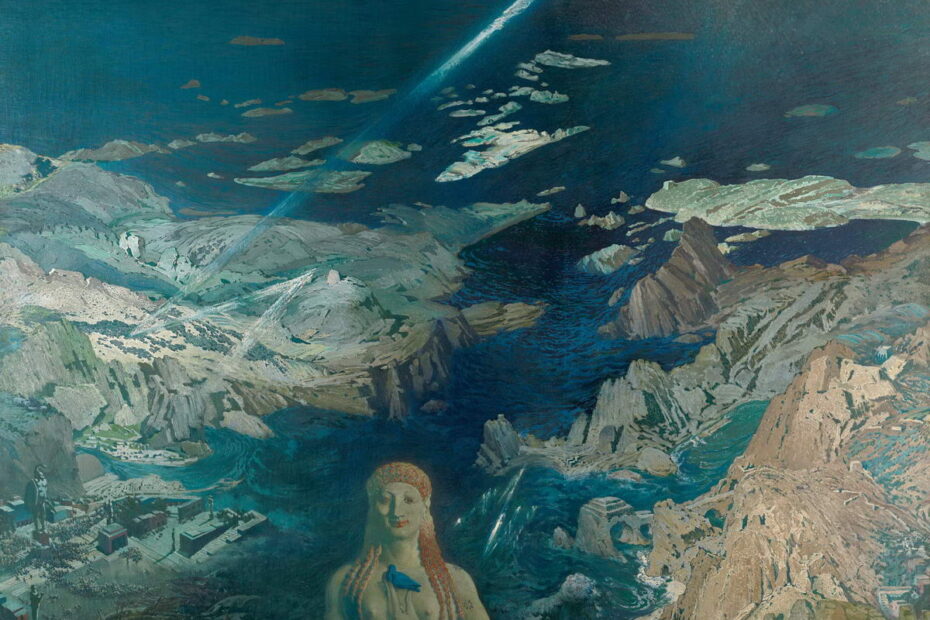Discussion Post I submitted for my Atlantic University TP5100 Course – November 25, 2020
This week’s readings were right in line with my way of thinking, particularly as I’m now through the first three seasons of Ancient Aliens! As an aside, it’s interesting that Joseph Selbie and David Steinmetz don’t necessarily ascribe to the ancient astronaut theory. In describing humans in Satya Yuga, they note that “while the mythic descriptions of paradise are, indeed, extra-ordinary, we need not conclude that they are extra-human or extra-worldly” (210, p. 166). As the authors have mentioned throughout the book, as we ascend in yugas, our ability to control our environment and manipulate matter increases dramatically.
Whether our ancestors were influenced by extraterrestrials or were just humans in higher states of consciousness as seen in the yuga model, the main issue is that the authors and I strongly disagree with “mainstream” science’s view of ancient man. As Selbie and Steinmetz note, “current archeology and paleontology, firmly wedded as they are to the prehistoric rags to modern riches story, give no credibility to almost anything ancient man has to say about his past” (2010, p. 159). Therefore, modern science is stuck in this box primarily created by Darwin’s theory of evolution, as the authors point out, which significantly underestimated the earth’s age, forcing human evolution theory to occur in the past 10,000 years (2010, p. 146-147).
Add to this the atheistic foundation of Darwin’s theory, and it’s not hard to see how most scientists and paleontologists today fail to recognize the sophistication of the ancients’ spirituality. As the authors put it, “Western science is currently wedded to a strictly material approach” which sees that anything “past or present” involving “religion, spiritual belief, or higher states of awareness is explained in one of three ways – as function, delusion, or deception” (2010, p. 153). Yet, as they also point out, the language of Satya Yuga is communicated telepathically and is most often done with symbols and images. “Images would, therefore, naturally be bound together with the meaning of what we might communicate telepathically to another person” (2010, p. 161). Ironically, as today’s scientists pat themselves on the back for being so much more advanced than those silly story-tellers of the ancient world, the truth is, myths are a much richer form of communication. “A picture is worth a thousand words because it concentrates information. Images can often more effectively convey meaning, simply because the images chosen already contain metaphoric and subtle connotations” (2010, p. 161), the authors add.
I firmly agree with Mary Settegast, as covered in the The Yugas, who says that the “more we learn about early man, the more difficult it is to describe him as primitive” (2010, p. 148). Yet, this notion slams directly against a brick fortress erected by modern academics, scientists, the media, and conventional wisdom, all of whom doggedly cling to Darwin’s rapidly aging theory and the “rags to riches” paradigm regarding the evolution of human consciousness that is so closely aligned. It’s why we find ourselves with this schizophrenic view of our past. Hard-core empirical findings like the real age of the Sphinx, the complexity and sophistication of Gobekli Tepe (2010, pp. 174-179), the very modern human-looking drawings at La Marche Cave (2010, pp. 174-184), and countless other evidence is simply ignored by the powers that shouldn’t be because it doesn’t fit the “official narrative.” Instead, we must look to niche publications like The Yugas and risk being labeled a kook by watching shows like Ancient Aliens and countless documentaries on the Gaia Network.
Settegast also points to what’s occurring right under the surface. And that’s a massive paradigm shift in the making. As she puts it, “Archeologists are aware of the inadequacies of the existing framework of thought. For almost two decades, prehistorians have been seeking a new paradigm, a wholly new way of looking at the early world that would accommodate the growing number of contradictions to the present point of view” (2010, p. 149). As we move further into Ascending Dwapara, I suspect we’ll see a lot of paradigm shifts across the board. The truth’s a pesky thing, as I like to say. Settegast’s right that if “an authentically new vision of man’s past is to be achieved, our most basic assumptions about the way things were may have to be uprooted, at least temporarily, and the old model let go in its entirety” (2010, p. 149). I’ll get the popcorn ready!
References
Selbie, J. & Steinmetz, D. (2010). “The yugas: keys to understanding our hidden past, emerging energy age, and enlightened future,” Nevada City, CA: Crystal Clarity Publishing.
